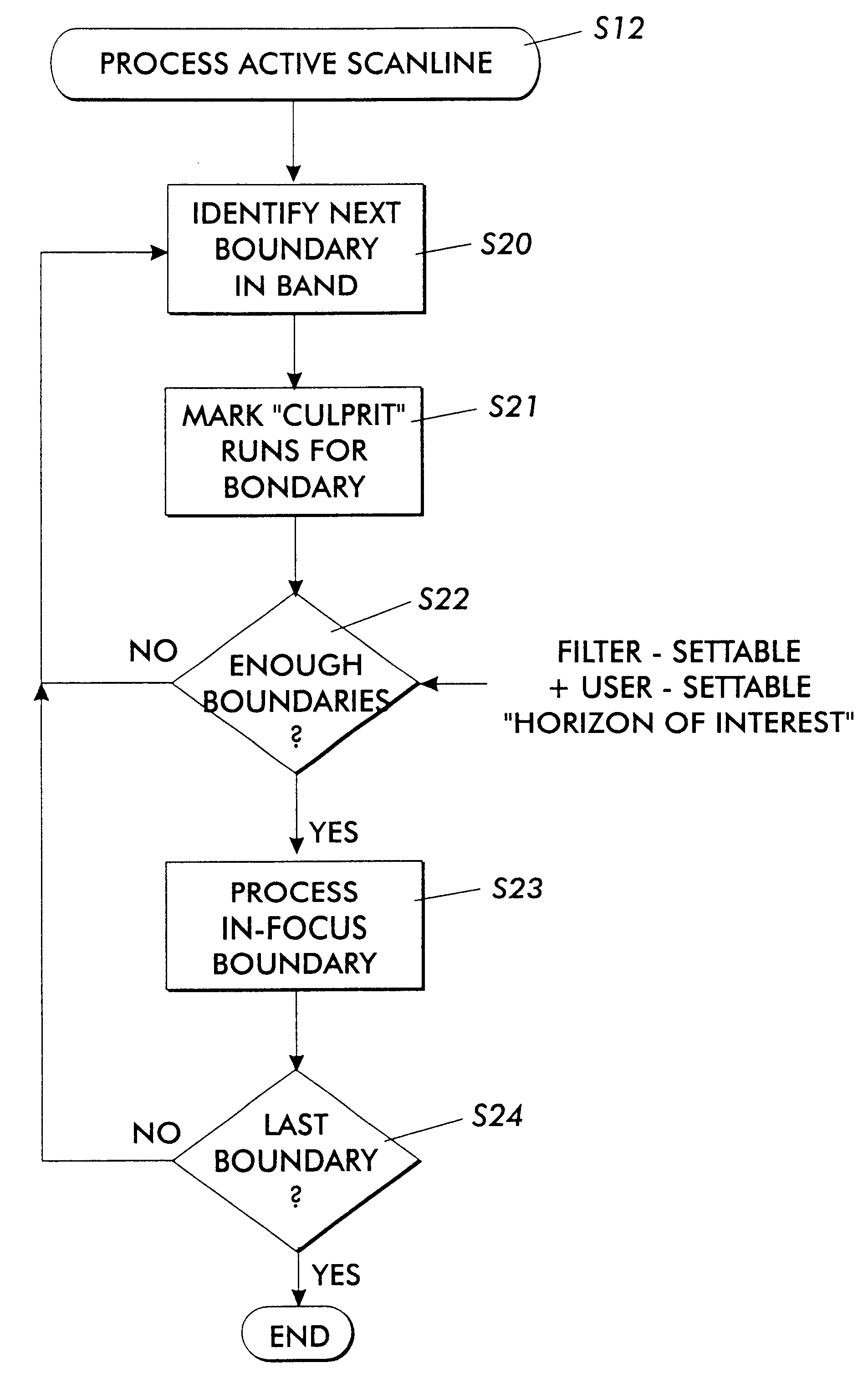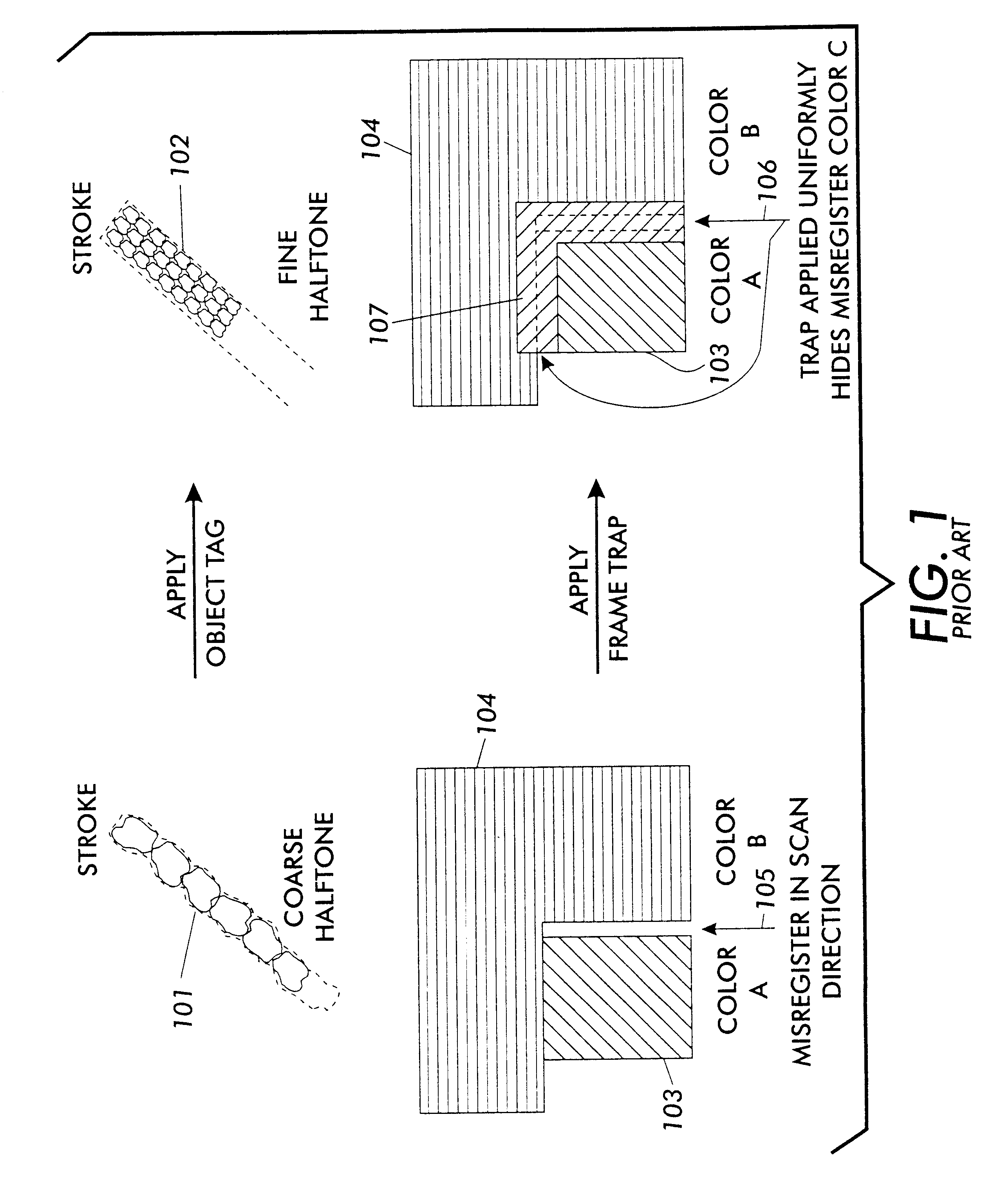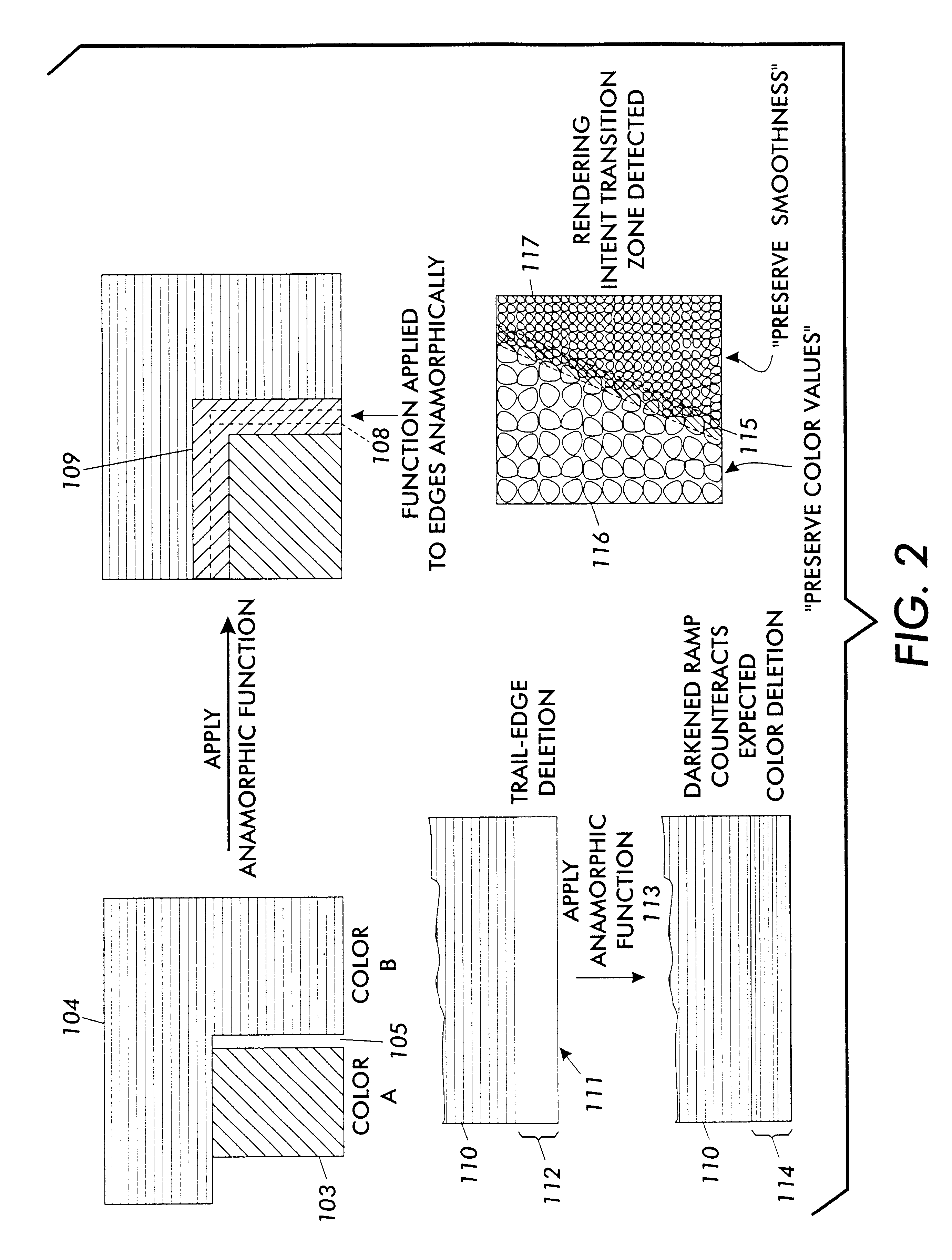In practice, every
color printing system has characteristic defects which can cause subtle problems that detract from achieving the highest possible quality
color printing.
For example, ink jet printing must
handle excessive ink coverage which can cause bleeding or spreading of colors and paper
distortion.
Xerographic printing contends with a different set of problems which can detract from print quality.
Examples are "haloing", in which toner in one separation interferes with toner transfer at the same location in another separation, "tenting", which is toner deletion caused by high toner
pile casting a mechanical or electrostatic "shadow" which prevents correct development of abutting toner, trail-edge deletion and starvation, which cause toner deletion at certain edges, or misregistration between two colors.
Many of these characteristic problems in printing systems can be traced to undesirable interactions between abutting colors on the page.
While increasingly sophisticated controls have been added to printing mechanisms to reduce defects and come closer to the perfect printer expected by the
digital image, electro-mechanical defects in any printing system are still common and are to be expected at both the low end where system cost restraints preclude use of expensive controls and the high-end where production speeds challenge existing control systems.
For example, large uniform color fills can contain visible
mottle in what should be smooth color, because the
random noise of the print mechanism causes tiny variations in the amount of color put on the page.
The second (
trapping) grouping of prior art is more limited in scope in that it attempts only to pre-compensate for a single printer defect caused by adjacent colors: misregistration.
If a printer misregisters between separations, an thin unwanted white or color line occurs when certain adjoining colors don't abut perfectly.
Instead, this group of prior art simply looks at the edge between two color areas, attempting to predict when two abutting colors could cause a
thin line problem if the printing system misregisters.
Instead, it looks for problematic adjacent objects (fills, text, sweeps, images, etc.), with predicted problems caused not only by colliding colors but also colliding attributes such as rendering intent (e.g., two different halftones adjacent to each other) or size in each direction (e.g., some printing problems only occur with objects greater than a certain size in a certain direction).
Even misregistration, the focus adjacency problem of the prior art, generally is more severe in one direction than the other because misalignment along the scan is caused by different mechanisms than misalignment down the page.
Fourth, in attempting to correct a predicted printing problem, the invention goes beyond the prior art in that it does not simply add a uniform-width, constant-color frame at an edge. Instead, it applies a function to the region near an edge which can change any of its attributes (color, rendering intent, etc.) as a function of the distance from the edge. This is important because it allows the system to solve more effectively a wider range of printing problems. For example, a xerographic printing problem called trail-edge deletion can occur when a color fill with sufficient size in the process direction is printed. At the lower process-direction edge, the toner is often depleted, resulting in a lighter color at the edge. This printing problem cannot be solved with a prior art frame or trap. However, by applying a function which changes the density of the color near the edge as a function of the scanline distance from the edge, the problem may be successfully pre-compensated for by the current invention. Note that the function is anamorphic: only process direction edges are modified. Even with the problem of misregistration, applying a function anamorphically to an edge can allow a subtler solution which might be seen as having the effect of a non-constant color, variable width frame different for each process or scan direction run of color, something not suggested by the prior art.
 Login to View More
Login to View More  Login to View More
Login to View More 


